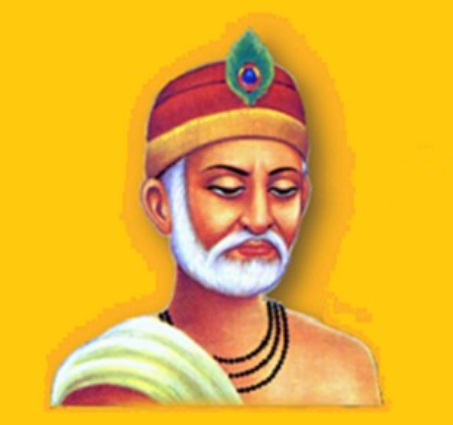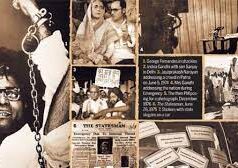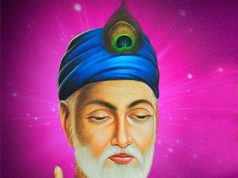
Kabir’s poems invite us to rethink our ideas of devotion and of God. While affirming some traditional aspects of worship, he decimates others. This epigram draws out two basic aspects of Kabir’s bhakti: all-inclusivity, and God as protector.
So I’m born a weaver, so what?
I’ve got the Lord in my heart.
Kabir: secure in the arms of Ram,
free from every snare.
(Adi Granth, sakhi 82; Hawley and Juergensmeyer 2004: p. 58)
The first line suggests the non-importanceof jati in the world of devotion, and the following two lines underscore the principle. Kabir makes a brazen statement about his profession that denotes jati. His mention of being born a weaver problematizes the idea that one’s birth determines one’s religious status. The indication here is that bhakti is an active choice rather than a matter of birth or legacy; it is something that one has to cultivate. His nonchalant tone conveys a bold stance: bhakti should be accessible to all. But there is a prerequisite, which is to have the lord in one’s heart. Kabir states that as long as one is truly devoted to Ram, he or she is a devotee. The fact that Kabir lived and spoke out against orthodoxy in 15th century Varanasi, where Brahmin priests played a crucial role in society, makes the poet-saint’s provocation all the more powerful.
The second half of the poem demonstrates the fruits of devotion
in the form of divine protection. Having God as protector or guardian is a common theme in bhakti literature, and it is this sentiment that is reflected in Kabir’s epigram. Hindu Deities such as Shiva, Vishnu, Durga and Hanuman are known for their protecting disposition, and the list includes Lord Rama. The image in Kabir’s poem of being “secure in the arms of Ram” conveys the notion that once devoted to God, the devotee will be taken care of, “free from every snare.” Kabir’s use of corporeal imagery is intriguing as the “heart” and “arms” indicate the physicality associated with bhakti, as well as the sagun (“with qualities”) nature of God. This reminds us of the body-mind argument raised by the issue of jati in the fi rst half of the epigram, in which Kabir
advocates mind over matter, although in this instance, imagery concerning the body is used in a positive context.
Nirgun God :
Kabir uses his words to intimate the formless divine that lies beyond words. Nirgun (literally, “without attributes”) names the view that God cannot be positively conceived and should not be worshiped through images or other visual forms (Hawley and Juergensmeyer 2004: p. 230). In this way, God can be interpreted as “the One,” “the All,” and “knowledge without duality,” which is the facet of the Divine that Kabir refers to in the following couplet:
The One is one with the All,
the All is one with the One.
Kabir is one with the knowledge without duality.
(sakhi 272 / Dharwadker 2003: p. 184)
Here Kabir states that the One, referring to nirgun God, is the
essence that permeates the All in the world of externalities. In his
cryptic and laconic style, he emphasizes that it is human beings who have to realize this oneness just like Kabir did. The idea of “knowledge without duality” is indicative of 8th Adi Shankara’s advaita (nondualist) philosophy, in which Brahman (cosmic being) and atman (individual soul) are viewed as one. This is a case where similar ideas that were earlier limited to Sanskrit philosophy are being opened up to people at large through easily accessible languages. This is a key trait of the bhajans of India’s vernacular poet-saints. In other poems Kabir is more direct in his language and style. In a poem
from the Kabir Granthavali, he says, “He’s Brahman: unmanifest, unlimited. He permeates everything as absolute knowledge”
(Dharwadker 2003: p. 148).
Although we have encountered two poems that conceptualize the Divine in abstract terms, there are other ways that Kabir played with the concept of nirgun. For example, there are two poems in the Adi Granth in which God is personifi ed as the bridegroom who has come to take away his bride, the spiritual seeker, in
marriage. Kabir says, “I will walk around the fi re with Ram Rai, my soul suffused with His color” and “Ram, my husband, has come to my house,” (Dass 1991: p. 8-9). The poet has used the motif of unity in marriage as an analogy for spiritual unity, an idea that Guru Nanak also adopts in some of his poetry. Although the portrayal of the Divine appears to be sagun (with qualities) in this context, the poetry does not describe specifi c personality traits or physical form and hence can still be characterized as nirgun in spirit. In addition to demonstrating a novel way in which the nirgun God can be represented, these poems create room for speculation about the intertextuality between the works of Kabir and other poet-saints such as Nanak, wherein Kabir’s poems may have directly infl uenced Nanak’s works.
This article was first published in 2021














